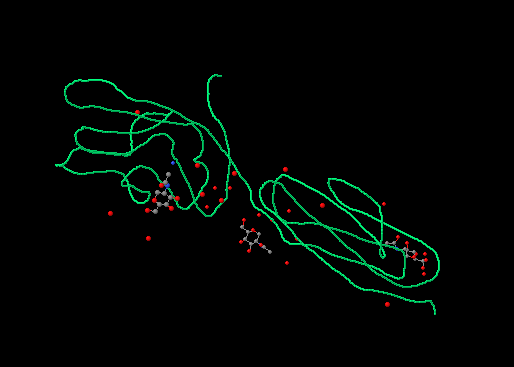CD2
| CD2 molecule | |||||||||||||
|---|---|---|---|---|---|---|---|---|---|---|---|---|---|
 | |||||||||||||
| |||||||||||||
| Identifiers | |||||||||||||
| Symbols | CD2 ; SRBC; T11 | ||||||||||||
| External IDs | Template:OMIM5 Template:MGI HomoloGene: 1338 | ||||||||||||
| |||||||||||||
| RNA expression pattern | |||||||||||||
 | |||||||||||||
| More reference expression data | |||||||||||||
| Orthologs | |||||||||||||
| Template:GNF Ortholog box | |||||||||||||
| Species | Human | Mouse | |||||||||||
| Entrez | n/a | n/a | |||||||||||
| Ensembl | n/a | n/a | |||||||||||
| UniProt | n/a | n/a | |||||||||||
| RefSeq (mRNA) | n/a | n/a | |||||||||||
| RefSeq (protein) | n/a | n/a | |||||||||||
| Location (UCSC) | n/a | n/a | |||||||||||
| PubMed search | n/a | n/a | |||||||||||
CD2 (cluster of differentiation 2) is a cell adhesion molecule found on the surface of T cells and natural killer (NK) cells. It has also been called T-cell surface antigen T11/Leu-5, LFA-2, LFA-3 receptor, erythrocyte receptor and rosette receptor.[1]
Function
It interacts with other adhesion molecules, such as lymphocyte function-associated antigen-3 (LFA-3/CD58) in humans, or CD48 in rodents, which are expressed on the surfaces of other cells.[2]
In addition to its adhesive properties, CD2 also acts as a co-stimulatory molecule on T and NK cells.[3]
Classification
Due to its structural characteristics, CD2 is a member of the immunoglobulin superfamily; it possesses two immunoglobulin-like domains in its extracellular portion.[3]
References
- ↑ Uniprot database entry for CD2 (accession number P06729)
- ↑ Wilkins A, Yang W, Yang J (2003). "Structural biology of the cell adhesion protein CD2: from molecular recognition to protein folding and design". Curr Protein Pept Sci. 4 (5): 367–73. PMID 14529530.
- ↑ 3.0 3.1 Yang J, Ye Y, Carroll A, Yang W, Lee H (2001). "Structural biology of the cell adhesion protein CD2: alternatively folded states and structure-function relation". Curr Protein Pept Sci. 2 (1): 1–17. PMID 12369898.
Further reading
- Sayre PH, Reinherz EL (1989). "Structure and function of the erythrocyte receptor CD2 on human T lymphocytes: a review". Scand. J. Rheumatol. Suppl. 76: 131–44. PMID 2471997.
- Rouleau M, Mollereau B, Bernard A; et al. (1997). "CD2 induced apoptosis of peripheral T cells". Transplant. Proc. 29 (5): 2377–8. PMID 9270771.
- Lüscher B (2001). "Function and regulation of the transcription factors of the Myc/Max/Mad network". Gene. 277 (1–2): 1–14. PMID 11602341.
- Yang JJ, Ye Y, Carroll A; et al. (2002). "Structural biology of the cell adhesion protein CD2: alternatively folded states and structure-function relation". Curr. Protein Pept. Sci. 2 (1): 1–17. PMID 12369898.
- Bell GM, Seaman WE, Niemi EC, Imboden JB (1992). "The OX-44 molecule couples to signaling pathways and is associated with CD2 on rat T lymphocytes and a natural killer cell line". J. Exp. Med. 175 (2): 527–36. PMID 1346273.
- Marie-Cardine A, Maridonneau-Parini I, Ferrer M; et al. (1992). "The lymphocyte-specific tyrosine protein kinase p56lck is endocytosed in Jurkat cells stimulated via CD2". J. Immunol. 148 (12): 3879–84. PMID 1351089.
- Hahn WC, Menu E, Bothwell AL; et al. (1992). "Overlapping but nonidentical binding sites on CD2 for CD58 and a second ligand CD59". Science. 256 (5065): 1805–7. PMID 1377404.
- Luzzati AL, Giacomini E, Giordani L; et al. (1992). "The antigen-specific induction of normal human lymphocytes in vitro is down-regulated by a conserved HIV p24 epitope". Immunol. Lett. 33 (3): 307–14. PMID 1385321.
- Ruegg CL, Strand M (1991). "A synthetic peptide with sequence identity to the transmembrane protein GP41 of HIV-1 inhibits distinct lymphocyte activation pathways dependent on protein kinase C and intracellular calcium influx". Cell. Immunol. 137 (1): 1–13. PMID 1832084.
- Schraven B, Samstag Y, Altevogt P, Meuer SC (1990). "Association of CD2 and CD45 on human T lymphocytes". Nature. 345 (6270): 71–4. doi:10.1038/345071a0. PMID 1970422.
- Samelson LE, Fletcher MC, Ledbetter JA, June CH (1990). "Activation of tyrosine phosphorylation in human T cells via the CD2 pathway. Regulation by the CD45 tyrosine phosphatase". J. Immunol. 145 (8): 2448–54. PMID 1976695.
- Luzzati AL, Pugliese O, Giacomini E; et al. (1990). "Immunoregulatory effect of a synthetic peptide corresponding to a region of protein p24 of HIV". Folia Biol. (Praha). 36 (1): 71–7. PMID 2111780.
- Seed B, Aruffo A (1987). "Molecular cloning of the CD2 antigen, the T-cell erythrocyte receptor, by a rapid immunoselection procedure". Proc. Natl. Acad. Sci. U.S.A. 84 (10): 3365–9. PMID 2437578.
- Peterson A, Seed B (1987). "Monoclonal antibody and ligand binding sites of the T cell erythrocyte receptor (CD2)". Nature. 329 (6142): 842–6. doi:10.1038/329842a0. PMID 2444890.
- Sayre PH, Chang HC, Hussey RE; et al. (1987). "Molecular cloning and expression of T11 cDNAs reveal a receptor-like structure on human T lymphocytes". Proc. Natl. Acad. Sci. U.S.A. 84 (9): 2941–5. PMID 2883656.
- Diamond DJ, Clayton LK, Sayre PH, Reinherz EL (1988). "Exon-intron organization and sequence comparison of human and murine T11 (CD2) genes". Proc. Natl. Acad. Sci. U.S.A. 85 (5): 1615–9. PMID 2894031.
- Lang G, Wotton D, Owen MJ; et al. (1988). "The structure of the human CD2 gene and its expression in transgenic mice". EMBO J. 7 (6): 1675–82. PMID 2901953.
- Leca G, Boumsell L, Fabbi M; et al. (1986). "The sheep erythrocyte receptor and both alpha and beta chains of the human T-lymphocyte antigen receptor bind the mitogenic lectin (phytohaemagglutinin) from Phaseolus vulgaris". Scand. J. Immunol. 23 (5): 535–44. PMID 3085210.
- Sewell WA, Brown MH, Dunne J; et al. (1986). "Molecular cloning of the human T-lymphocyte surface CD2 (T11) antigen". Proc. Natl. Acad. Sci. U.S.A. 83 (22): 8718–22. PMID 3490670.
External links
- CD2+Antigen at the US National Library of Medicine Medical Subject Headings (MeSH)
| This protein-related article is a stub. You can help Wikipedia by expanding it. |